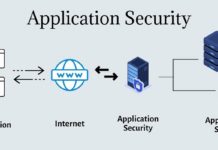JFrog Ltd. (“JFrog”) (NASDAQ: FROG), the Liquid Software company and creators of the JFrog DevOps Platform, today released free scanning tools specifically designed for developers to detect the presence and utilisation of Apache Log4j in both source code and binaries. The four new tools are available for download immediately via GitHub in both Java and Python.
The new tools perform specialized scans to identify direct or indirect (transitive) dependencies, as well as instances where Log4j does not appear as a separate file, but is bundled inside a larger software package and harder to detect. The new tools are command line-based for easy integration with developers’ existing environments and their open-core helps ensure the capabilities will continue to evolve over time as needs change.

“The Log4j vulnerability has set the enterprise software landscape on fire due to its widespread usage as a component across the software supply chain, making it difficult to rapidly pinpoint and remediate,” said Asaf Karas, CTO of JFrog Security Research. “In times of crisis open-source tools that scan both binaries and source code allow community collaboration and contributions to collectively solve immediate and long-term security issues, which is why we’re proud to release these tools today.”
Industry research estimates nearly half of all global enterprises have already been impacted by the Log4j vulnerability with incidents rising by the day. Government officials from Austria, Canada, New Zealand, the U.K., and the U.S. have also sounded alarms over this recently exposed vulnerability and are recommending immediate action by enterprises and software providers alike.
The Log4j vulnerability was originally discovered and reported to Apache by the Alibaba cloud security team on November 24th. MITRE assigned CVE-2021-44228 to this vulnerability, which has since been dubbed Log4Shell by security researchers. JFrog’s Security Research team detailed currently known Log4j vulnerabilities and outlined best practices for how to identify and address them in this blog, which is being continuously updated.











































































